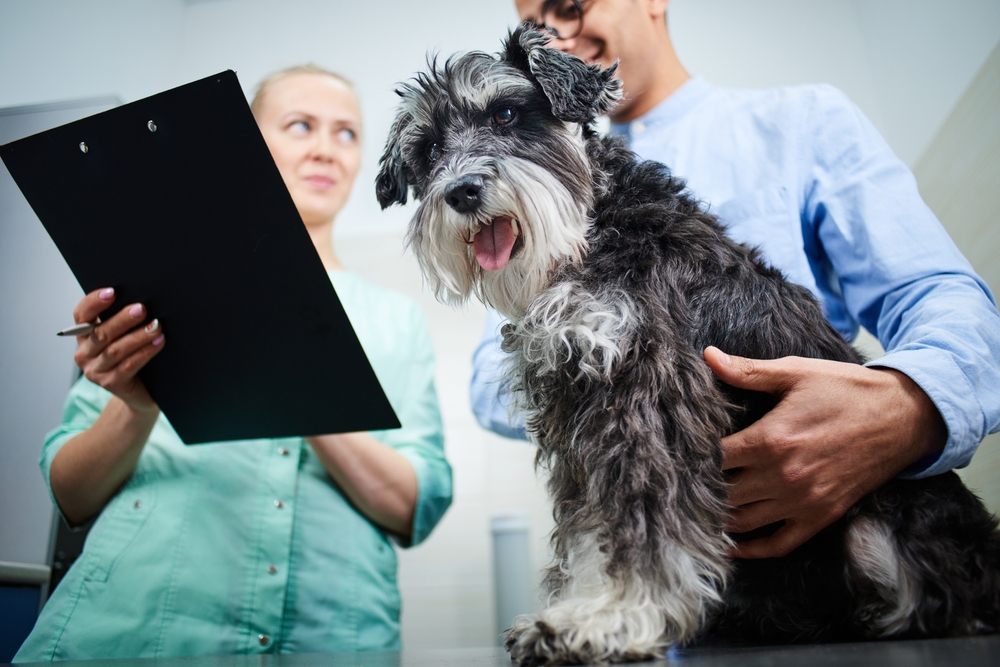As a pet owner, you will encounter unexpected veterinary bills at some point during your cat’s or dog’s life, especially if they have an emergency or develop a chronic condition. While you understand the importance of regular checkups and vaccinations for your four-legged friend’s preventive care, have you considered pet insurance’s benefits to help you cover those costs and provide a financial safety net when the unexpected occurs? Our team at Family Pet Care shares some surprising reasons why investing in pet insurance can be a smart decision for your furry pal’s health and your wallet.
#1: Financial protection for accident-prone pets
Accidents happen, and your pet’s curiosity and boundless energy can lead to unexpected mishaps. From swallowing foreign objects to injuring themselves during play, accident-prone pets can put a strain on their health and your finances. Pet insurance can be an essential lifeline for owners of accident-prone pets. Accident-only insurance plans cover injuries or conditions considered accidental such as a broken bone and foreign object ingestion. Accident-only policies do not cover medications, vaccinations, or routine exams. However, emergency trauma care can be expensive, and the accident-only option ensures your plan covers the costs of the care your pet needs when the unexpected happens.
#2: Coverage for pet illnesses
Pets can develop various illnesses throughout their lives, ranging from minor ailments to serious diseases. An illness and accident insurance plan is more comprehensive than an accident-only plan and often covers the costs associated with conditions such as cancer, endocrine disorders, and some orthopedic injuries, as long as the conditions are not considered pre-existing. Illness and accident insurance coverage includes:
- Diagnostic tests — When your pet gets sick, diagnostic tests, such as blood work, X-rays, and ultrasounds, may be necessary to determine the underlying cause. These tests allow our veterinarian to accurately diagnose your furry pal’s illness and develop an effective treatment plan.
- Medications and treatments — Depending on your pet’s illness, they may require medication or other treatments. Pet insurance can help cover the cost of these medications and treatments, ensuring that your pet receives the care they need to recover.
- Hospitalization and surgery — In severe cases, your pet may require hospitalization or surgical intervention to treat their illness. Pet insurance can provide coverage for hospital stays, surgeries, anesthesia, and postoperative care, alleviating your financial burden and ensuring your pet receives necessary medical attention.
#3: Additional wellness coverage for comprehensive veterinary care
Most pet insurance companies offer wellness riders that can be added to accident and illness plans. These riders may cover routine veterinary care and preventive services that are essential for maintaining your pet’s health and detecting potential issues early before they escalate into serious problems. While wellness riders come with an additional monthly fee, investing in preventive care can save you money in the long run by addressing problems early and saving you money on future medical expenses down the road. Common preventive services covered by a wellness rider include:
- Annual wellness exams
- Vaccinations
- Routine blood work
- Spay and neuter procedures
- Dental cleanings
- Flea, tick, and heartworm prevention and testing
#4: A strong foundation for young pets
The best time to enroll in a pet insurance plan is when your pet is young and healthy. Most pet insurance plans do not cover pre-existing conditions, and by insuring your pet when they are young—before adverse health conditions develop—your plan will likely cover their future health conditions.
#5: Multiple pet discounts
Veterinary care costs for multiple pets quickly add up, especially if one becomes ill or is injured. Most pet insurance providers offer a multiple pet discount to make the policy more cost-effective. Some pet insurance companies offer the same discount for every additional pet, and others provide a larger discount for each additional pet.
#6: Flexible reimbursement options

Most pet insurance is based on reimbursement, so you must be able to pay your pet’s veterinary bills upfront, and after you file a claim, your insurance company reimburses you. You typically can choose your reimbursement level (e.g., 70%, 80%, 90%), which raises or lowers your premium payment accordingly. If you can afford a higher deductible amount, your monthly premiums may be lower.
Pet Health insurance can help you prepare for your pet’s unexpected health care expenses, but before you commit to a policy, carefully review the insurance company’s options and read the fine print. If you have questions or need help choosing the right insurance plan for your pet, contact Family Pet Care to discuss the details you should consider when researching pet insurance plans.

